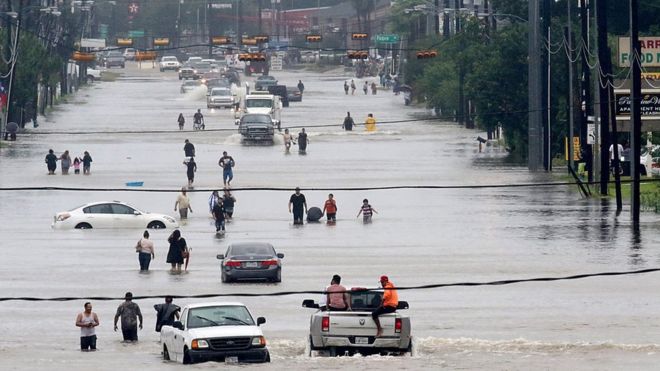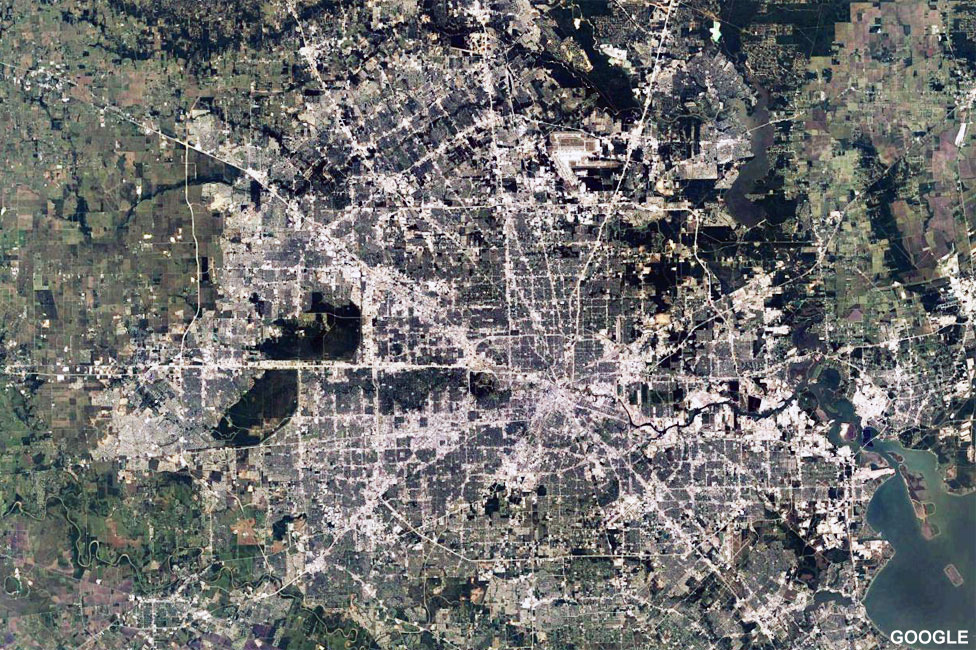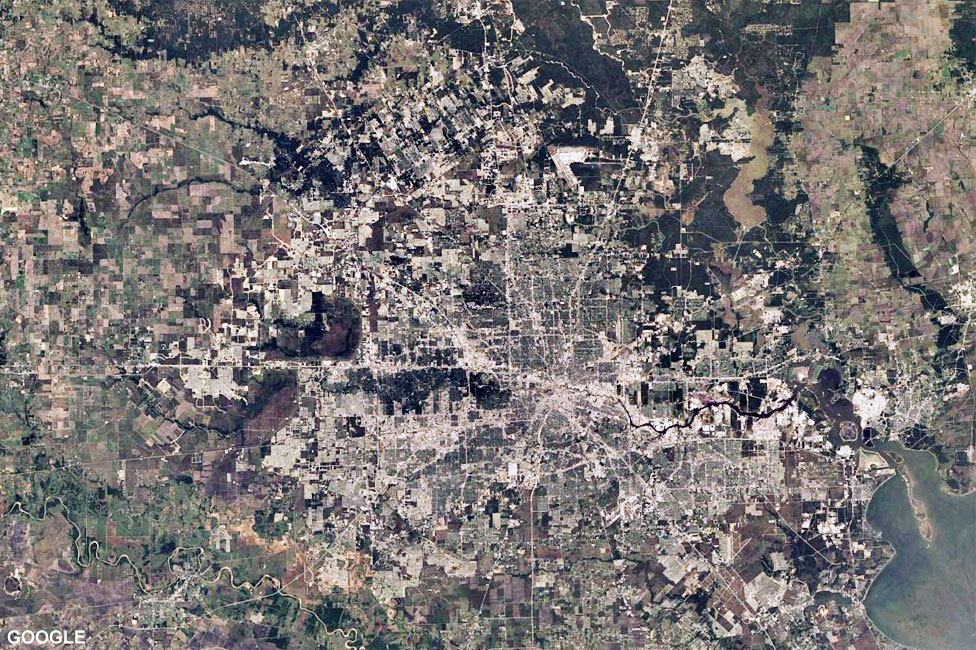Why is Houston so vulnerable to devastating floods?
Why is Houston so vulnerable to devastating floods?

Parts of the Houston region have been hammered by more than 50in of rainfall since Hurricane Harvey made landfall, setting new records for the US. But why has the city become America's flood capital?
In April 2016 "historic" flooding hit Houston, with 17.6in (44.7cm) of rain dumped on the city in a single day.
The flood came only 11 months after another massive storm struck the city, dropping over a foot of rain.
Together, these two events caused 16 deaths and more than $1bn (£777m) in damages.
Both pale in comparison to Hurricane Harvey, the impact of which has secured Houston's unenviable reputation as the US city most severely affected by floods.
Understanding why the risk to life and property is rising is crucial not only to the future of America's fourth-largest city, but to others around the world which share many of its problems.
Urban sprawl
Houston's unbridled, rapid growth is a primary factor.
The population of its metropolitan area is close to 6.8 million people and, with predictions of some of the country's fastest growth for the coming years, it is expected to top 10 million by 2040.Parts of the Houston region have been hammered by more than 50in of rainfall since Hurricane Harvey made landfall, setting new records for the US. But why has the city become America's flood capital?
In April 2016 "historic" flooding hit Houston, with 17.6in (44.7cm) of rain dumped on the city in a single day.
The flood came only 11 months after another massive storm struck the city, dropping over a foot of rain.
Together, these two events caused 16 deaths and more than $1bn (£777m) in damages.
Both pale in comparison to Hurricane Harvey, the impact of which has secured Houston's unenviable reputation as the US city most severely affected by floods.
Understanding why the risk to life and property is rising is crucial not only to the future of America's fourth-largest city, but to others around the world which share many of its problems.
Urban sprawl
Houston's unbridled, rapid growth is a primary factor.
The population of its metropolitan area is close to 6.8 million people and, with predictions of some of the country's fastest growth for the coming years, it is expected to top 10 million by 2040.
Growth itself is not a problem, as it can create economic, social and environmental benefits for cities.
But poorly planned growth which fails to carefully manage land use - for housing, businesses and the infrastructure like roads, parks and sewers that cities need - can create problems and even lead to disasters.
Houston has long favoured light touch controls, which has led to haphazard development.
The city now covers an enormous area of more than 1,500 sq km.
It is the archetype of urban sprawl, where land is made readily accessible for real estate development on the city's ever expanding periphery.
Loss of habitat
This unplanned growth has led to many problems.
One is that vast acres of wetlands and prairie land - which soak up large amounts of rainfall - have been paved over.
Between 1992 and 2010, for example, White Oak Bayou in north-west Houston lost about 70% of its original wetlands.
During heavy rain the city's growing expanses of concrete generate runoff that clogs and sometimes overwhelms its complex network of waterways. This includes creeks and bayous, as well as flood controls like levees and detention basins.
Successful wetland and prairie land protection would not itself have a major effect in reducing flooding caused by unprecedented rainfall like that delivered by Harvey.
Yet, protecting and restoring the natural areas provides an important contribution to making Houston less vulnerable to more moderate storms.
They also bring environmental benefits - providing fish and wildlife habitats, and cleaning polluted runoff that can sometimes enter from the city.
The artificially blue-coloured areas show water detected before and after the storm.



Post a Comment